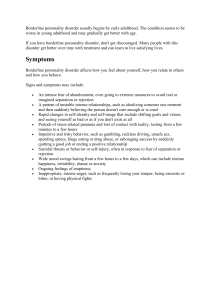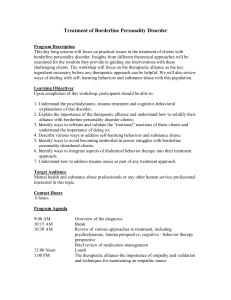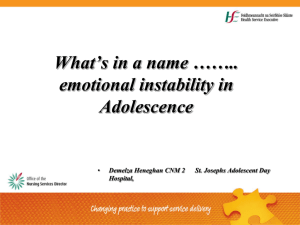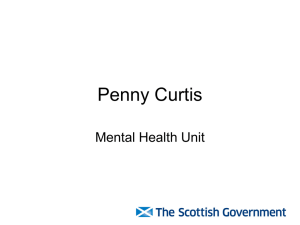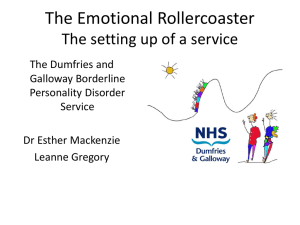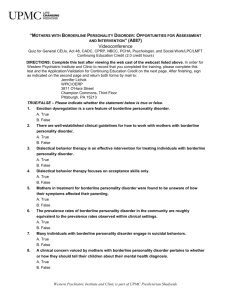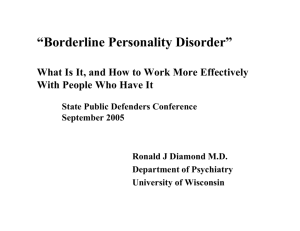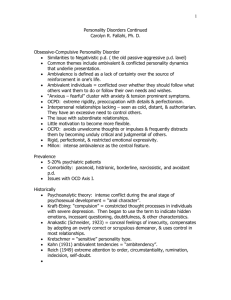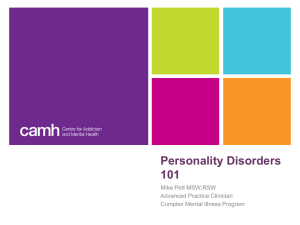Post Test - People Incorporated
advertisement
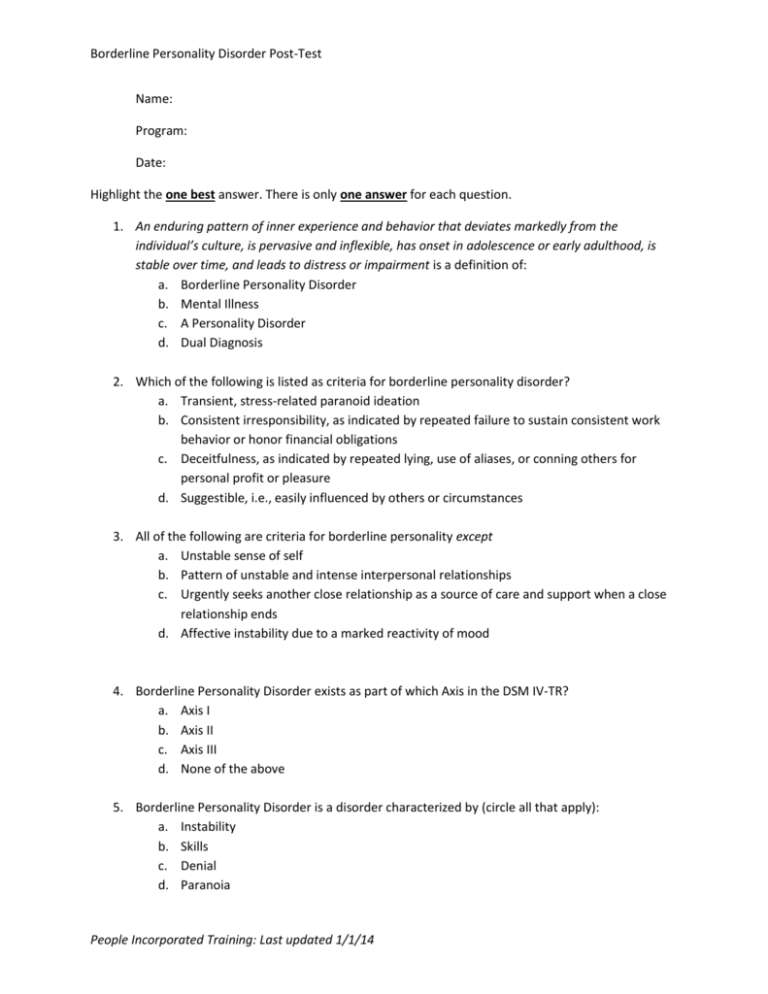
Borderline Personality Disorder Post-Test Name: Program: Date: Highlight the one best answer. There is only one answer for each question. 1. An enduring pattern of inner experience and behavior that deviates markedly from the individual’s culture, is pervasive and inflexible, has onset in adolescence or early adulthood, is stable over time, and leads to distress or impairment is a definition of: a. Borderline Personality Disorder b. Mental Illness c. A Personality Disorder d. Dual Diagnosis 2. Which of the following is listed as criteria for borderline personality disorder? a. Transient, stress-related paranoid ideation b. Consistent irresponsibility, as indicated by repeated failure to sustain consistent work behavior or honor financial obligations c. Deceitfulness, as indicated by repeated lying, use of aliases, or conning others for personal profit or pleasure d. Suggestible, i.e., easily influenced by others or circumstances 3. All of the following are criteria for borderline personality except a. Unstable sense of self b. Pattern of unstable and intense interpersonal relationships c. Urgently seeks another close relationship as a source of care and support when a close relationship ends d. Affective instability due to a marked reactivity of mood 4. Borderline Personality Disorder exists as part of which Axis in the DSM IV-TR? a. Axis I b. Axis II c. Axis III d. None of the above 5. Borderline Personality Disorder is a disorder characterized by (circle all that apply): a. Instability b. Skills c. Denial d. Paranoia People Incorporated Training: Last updated 1/1/14 Borderline Personality Disorder Post-Test 6. When assessing the BPD client, it especially important to assess for: a. Paranoia b. Staff splitting c. Suicide d. Medication compliance 7. The BPD client’s agenda is to: a. Find the one person who will understand how much pain they are in b. Manipulate people to get what s/he wants c. Be the center of attention d. Get others to assume responsibility for most major areas of life 8. Which of the following disorders most commonly co-occurs with borderline personality disorder? a. Eating Disorders b. Schizophrenia c. Substance Abuse Disorders d. Depression 9. Working with someone with Borderline, it’s necessary to validate and accept the client where they are, but at the same time push for change. This is an example of a: a. Listening statement b. Dialectic c. Coincidence d. Distortion 10. The most effective treatment for borderline (according to the evidence-base literature) is a. Eye Movement Desensitization and Reprocessing (E MDR) b. Cognitive Behavior Therapy (CBT) c. Dialectical Behavior Therapy (DBT) d. Acceptance Commitment Therapy (ACT) Total out of 10 ____________________________ 7 out of 10 (70%) is a passing grade People Incorporated Training: Last updated 1/1/14

